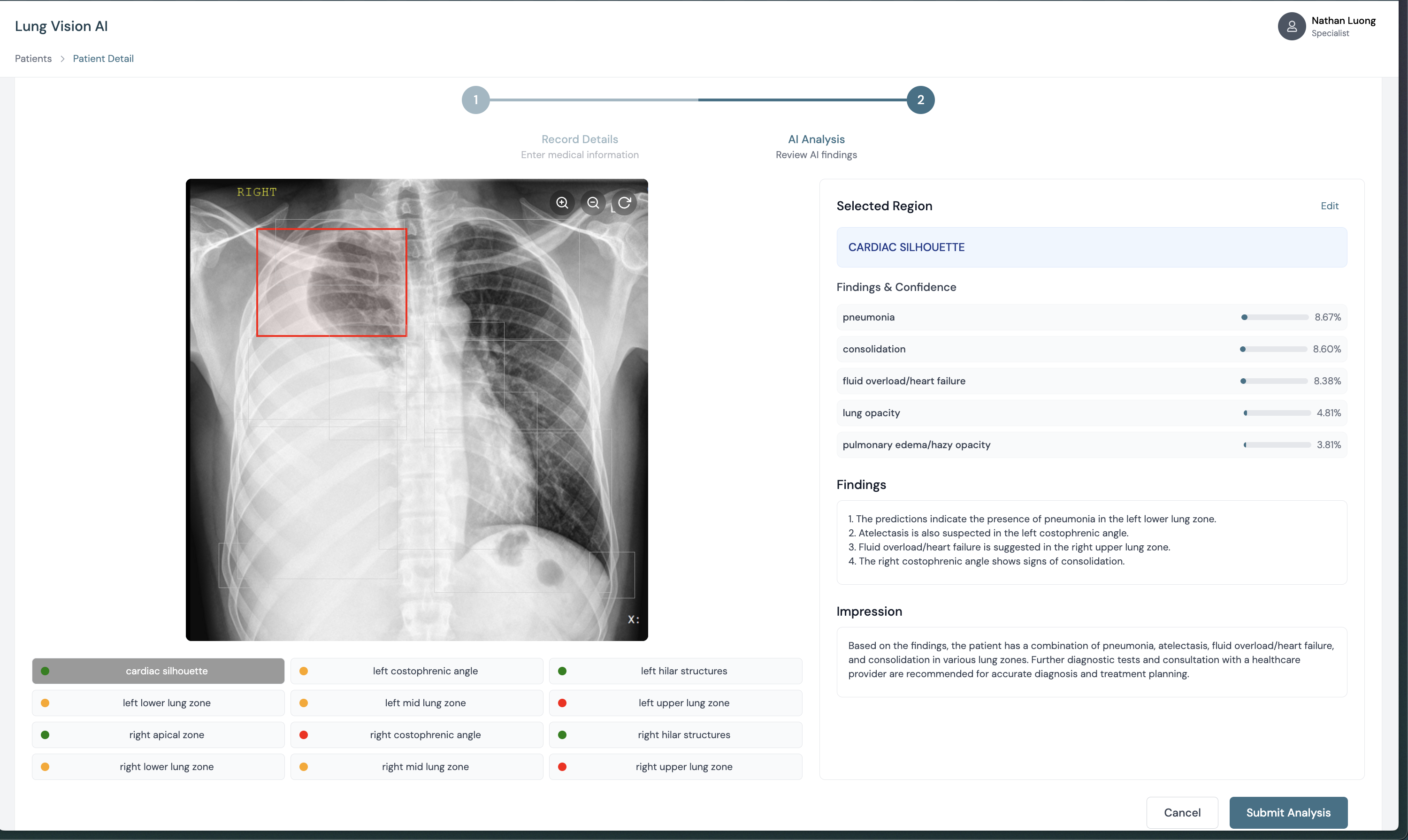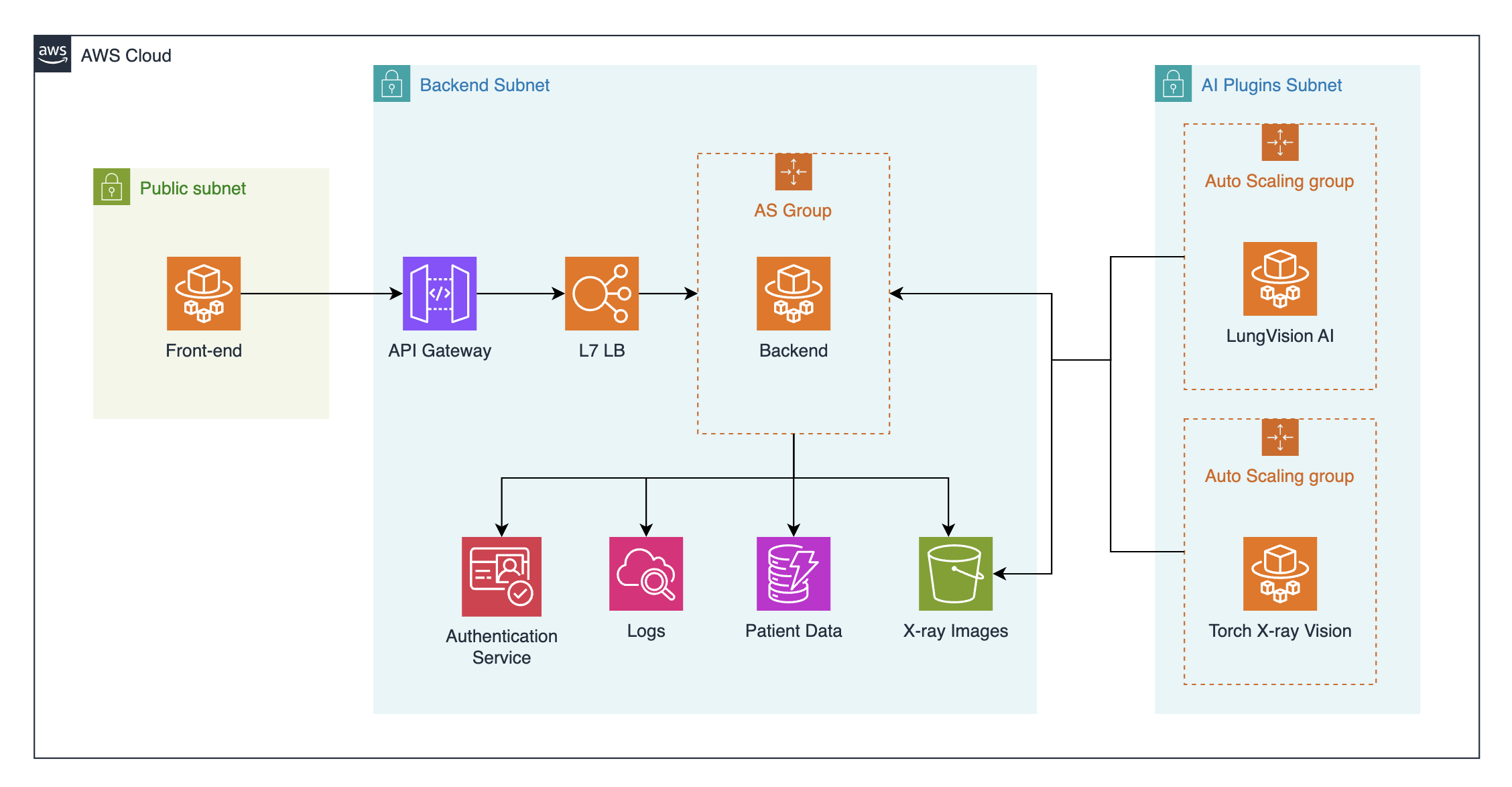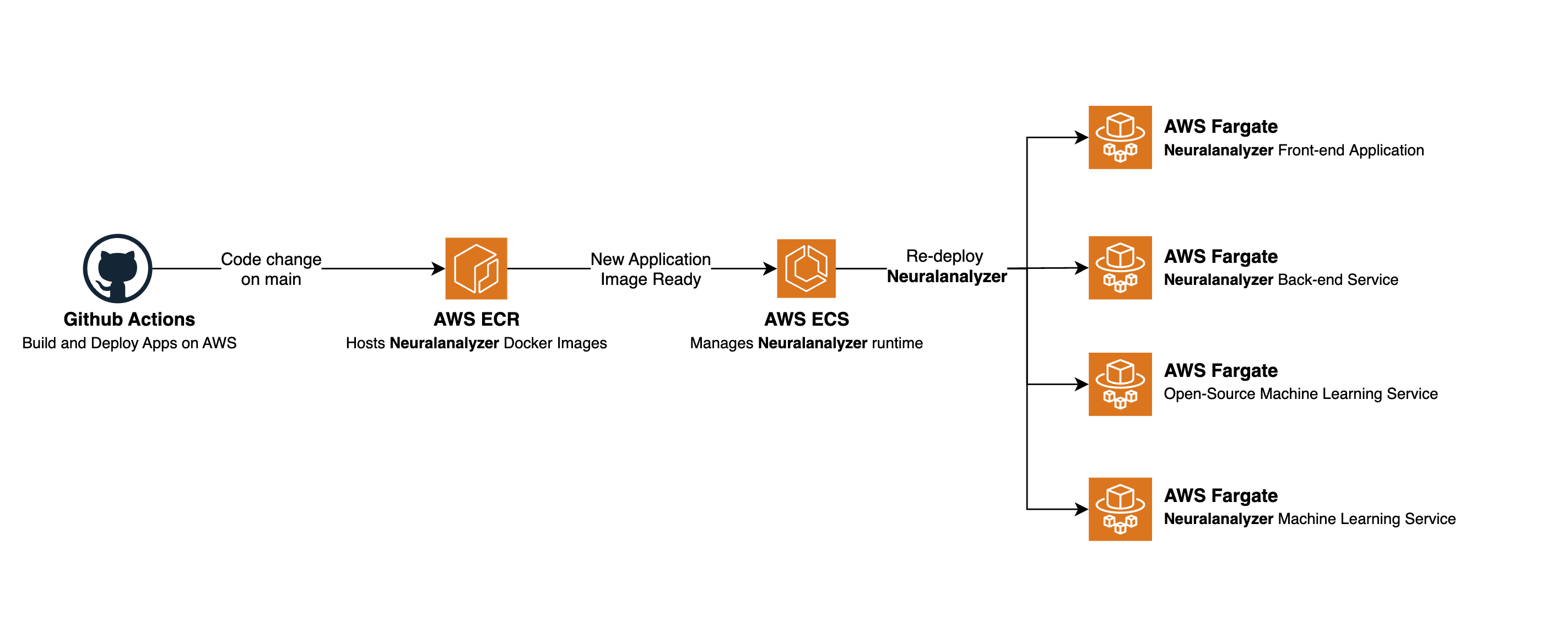How LungVision AI was made
Nathan Luong | June 8, 2024 |143
TLDR - Watch our demo
👨💻
Watch our demo
Problem Statement

Disease prediction via medical imaging continues to be one of the most important aspect of health-care. However, the health-care industry is still slowly catching up with current technology, making disease prediction and prevention processes labour-intensive and inefficient.
With a prolong history in operation, countless images has been captured from CT Scanners and X-Ray machines, for medical and health-care research, but yet to be applied in hospital settings between physicians and patients.
Our team, saw an opportunity to transform traditional health-care processes, by applying Machine Learning, and modern software engineering techniques; aiming to provide an optimized, unified, and HIPAA-compliant platform to predict diseases from chest X-Ray scans.
Our Constraints
- HIPAA & Related Healthcare Compliances
- Data Usage Consent: Data used to train our models need atient's consent even after being anonymized.
- Backward Compatability with older equipments
- Cultural Sensitivity: Different regions and cultures may have varying levels of acceptance toward AI in healthcare, which can impact the system's deployment.
High-Level Overview

For simplicity, we decided to implement a generic 4-tier AI application with:
- The Front-end tier hosted on ECS Fargate serving built HTML, JS and CSS.
- The Backend tier handling authentication and external service coordination.
- The DB Tier handling patient data and X-Ray persistent. X-Ray images can be accessible from the AI plugins tier via role-based access control.
- The AI plugin Tier handling disease prediction logic with a pre-defined API supported by the back-end layer.
Features that this architecture provide
-
AI as plugins: We understand that diagnoses accuracy is the top priority for LungVision AI. This standardized approach provides developers the ability to rapidly develop new AI models which can be tested seperately and register itself with the backend service with minimal to zero downtime; providing physicians with seemless and high-quality experience.
-
Independent Scaling: Since LungVision AI is still a day-to-day tool for physicians, patient record management is still a vital component of the application. Therefore the ability for this CRUD backend service to be scaled independently from the prediction plugins will save precious time in the hosplital environemnt.
-
Observability: With services hooking to
CloudWatch, developers easily observe metrics such as error rate, model accuracy, model usage, and service load in real-time. -
HIPPA Compliance by default: With 100% of our application hosted on AWS, it is HIPAA-guarenteed.
Build Pipeline
Our simple build pipeline consists of a Github Action Job that trigger on merge. It registers the new application images on ECR and simply roll-out the new deployment on ECS.
